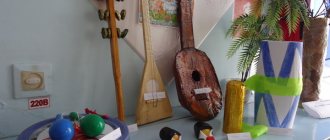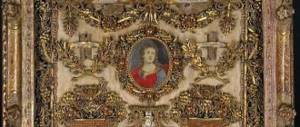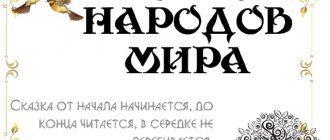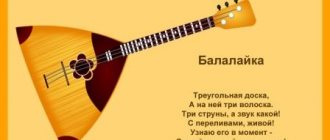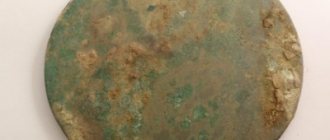Hang
An amazing musical instrument, one of the newest inventions of our time. Hang was invented in Switzerland in 2000 by Felix Rohner and Sabine Scherer. The creators of the instruments claim that the basis of playing an exotic percussion instrument is the feeling, sensation of the music and the instrument itself. And the owner of the hang must have an ideal ear for music.
The hang consists of a pair of metal hemispheres that together form a disk similar to a flying saucer. The upper part (also the front) of the hang is called DING; on it there are 7-8 tonalities enclosed in a musical circle. They are indicated by small depressions, and in order to obtain a certain key of the melody, you need to hit one or another depression.
The lower part of the instrument is called GU. It has a deep hole in which the musician’s fist should be located. The structure of this disc acts as a resonance and modulation of sound.
Bonang
Bonang is an Indonesian percussion instrument. It consists of a set of bronze gongs, which are secured with cords and placed horizontally on a wooden stand. At the top of the central part of each gong there is a bulge - pencha. It is this that makes the sound if you knock on it with a wooden stick with a cotton cloth or rope wrapped around its end. Balls of burnt clay suspended under gongs often act as resonators. Bonang sounds soft and melodious, its sound fades slowly.
Gusli
It is difficult to imagine folk instruments without this string product. The use of plucked harps was first mentioned in chronicles dating back to the fifth century. Their exact ancestor is not known for certain, but there is an opinion that the instrument originated from the ancient Greek cithara. Since ancient times they have been used as an accompaniment for the soloist's voice.
An ancient product, which has survived to this day almost unchanged, can be helmet-shaped or wing-shaped. The latter are created in the shape of a triangle. The minimum number of strings is five, the maximum is fourteen. The technique of playing the winged harp is such that a person touches all the strings at the same time with his right hand. At the same time, the left one neutralizes unnecessary sounds.
When playing the helmet-shaped harp, the performer uses two hands at once. This tool is extremely difficult to master. However, all modern orchestras have guslar players in their composition, because they give the work a unique flavor.
In ancient times, clavier-shaped harp became widespread. Often representatives of the clergy performed melodies on them. The tool was based on a rectangular box equipped with a lid.
Several oval holes were cut out on one side and two slivers of wood were attached to it. The first sliver played the role of a snare. Metal pegs were screwed into the second, and strings were wound around them. The instrument was characterized by a piano tuning. To perform a melody on such a harp, it was necessary to first learn the notes.
| The main techniques for playing the instrument are plucking and clanking. Nowadays, keyboard harps have also appeared. They have a unique mechanism installed; when you press the keys, the strings open, and the performer can select the desired chord. This greatly simplifies the game process. |
Modification of the instrument
The balalaikas played today differ in appearance from the ancient ones. The instrument was modified by musician V. Andreev together with S. Nalimov, F. Paserbsky, and also V. Ivanov. These people decided that the soundboard should be made from spruce and the back from beech. In addition, Andreev proposed making the tool a little shorter, up to 700 mm. A wonderful person F. Paserbsky invented a whole group of balalaikas: primu, tenor, double bass, piccolo, alto, bass. Today it is impossible to imagine a traditional Russian orchestra without them. After some time, this man, who made many Russian folk instruments, received a patent for them.
The balalaika can be used not only in orchestras, it is also often played solo.
Shamisen
The Japanese shamisen is a stringed musical instrument from the plucked category. It consists of a small body, a fretless neck and three strings, and the overall size usually does not exceed 100 cm. Its sound range is from two to four octaves. The thickest of the three strings is called sawari, and it is thanks to it that the instrument is able to produce a characteristic vibrating sound.
Shamisen first appeared in Japan at the end of the 16th century thanks to Chinese traders. The instrument quickly became popular among street musicians and party organizers. In 1610, the first works were written specifically for shamisen, and in 1664 the first collection of musical compositions was published.
Like many other musical instruments of the peoples of the world, the shamisen was considered the prerogative of the lower strata of the population. However, after the Second World War, the situation changed dramatically and he began to be respected more. Shamisen is used by musicians during performances of the famous Japanese theater Kabuki.
Rubel
A percussion instrument that is one of the most ancient products. Our ancestors created them from scrap materials: wood, leather, bones, metal. They were credited with magical powers and were sometimes used to communicate with spirits. Percussion instruments, characterized by the absence of a sound range, have great expressive capabilities. Therefore, they are widely used in folk music.
A rubel or pralinnik is a household item. In ancient times, girls used it to smooth out clothes after washing. Things were manually wrung out, rolled onto a rolling pin and rolled out edgewise. As a result, even poorly washed laundry acquired a snow-white hue. This is where the popular proverb came from: “If we don’t wash, then we roll.”
A rubel is a plate made of hardwood, equipped with a handle at the end. On one side, the raft was perfectly smooth, on the other, it had a ribbed surface. In different regions, the product differed in shape or decorative elements.
For example, in the Vladimir province, rubles were decorated with geometric carvings and were unusually long. On the Mezen River they were made wide, slightly widening towards the bottom. In the Yaroslavl region, in addition to geometric carvings, the pralinnik was sometimes decorated with three-dimensional figures. Sometimes the handle of the rubel was hollow; peas or other small elements were placed inside it. When rolling out, they made additional noise.
| To create praliniki, exclusively hard deciduous wood is used: rowan, oak, maple, etc. Sometimes local craftsmen took waste from wooden boards for work and processed them manually or on a machine. The ends of the product are filed, sharp edges are rounded with a file. Then rollers are cut on the lower surface. |
Classification of accordions
These folk instruments, common in Russia, are divided into two types according to the method of producing sound. The first category includes harmonicas in which, when the bellows move, all keys, when pressed, produce sounds of the same pitch. Such tools are quite popular. And the second category includes harmonicas, whose pitch depends on which direction the bellows move. The first type includes the instruments “khromka” (the most popular today), “Russian wreath”, and also “livenka”. And “talyanka”, “Tula”, “cherepanka” and “Vyatskaya” belong to the second category. You can classify harmonicas by the type of right keyboard, and more specifically, by the number of keys. Today, the “khromka”, which has two rows of buttons, has become widely known, but there are tools with three, and some even have only one row. Now you understand that there are many accordions and they are all different.
- Tools with one row of buttons: “Tula”, “Vyatskaya”, “Livenskaya”, “Talyanka”. The last name is derived from “Italian”, there are 12/15 keys on the right, and 3 on the left.
- Tools with two rows of buttons: “chrome”, “Russian wreath”.
- The accordion is automatic.
Horn
An ancient stringed instrument that our ancestors used together with other products: tambourines, harps. The body of the horn is hollowed out of wood and has an oval or pear shape. The neck is relatively short, with a straight or curved head. Three strings are attached to it.
The flat soundboard of the product is equipped with a resonator hole. The length of the beep is no more than one meter. The maximum parameters of the instrument are from thirty to eighty centimeters. The bow has the shape of an arc and resembles a bow in appearance.
The performer touches all the strings at once while playing. But to get the main melody, only the first string is required. The rest are considered bourdon and sound in the same key.
| A distinctive feature of the instrument is the non-stop buzzing of the lower strings. The musician, while performing a melody, tries to keep the buzzer on his knees in a vertical position. |
Kazoo
The kazoo is an American folk instrument. Used in skiffle style music. It is a small cylinder, tapering towards the end, made of metal or plastic. A metal plug with a membrane made of tissue paper is inserted into the middle of the instrument. Playing the kazoo is very simple: just sing into the kazoo, and the tissue paper will do its job - change the musician’s voice beyond recognition.
